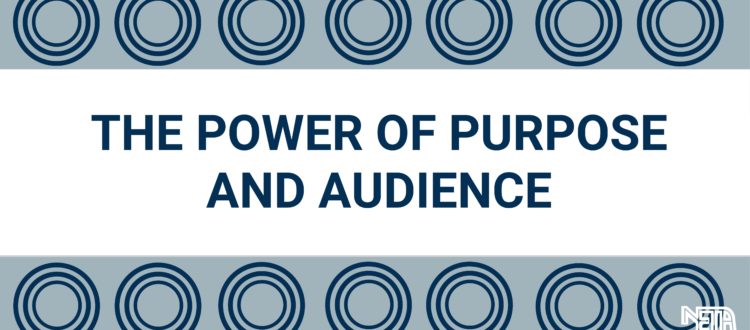The Power of Purpose and Audience – for all of Us
By Rachel Jank
We’ve heard it all before:
Real-World audiences and real-world problems can greatly enhance student engagement with their learning (Wilhelm et. al 2020).
When there is a purpose – when students can see the product of their work in action – students pick up the content in a more personal way. Personal connection leads to motivation, which leads to cultivating knowledge and skills (Wilhelm & Smith, 2006).
As teachers, many of us have worked diligently to find audiences for our students. Dewey (1938) discusses these real-world moments when he defines “an experience” as one of “worthwhile meaning” to the present – not just the future lives of students (p. 49). Wiggins and McTighe (2011) include this thinking in their GRASPS assessment.
Fortunately for 21st Century teaching, digital resources place real-world purpose and audience closer to the classroom than ever.
And yet, in the grind of teaching, some of us need a little prompting to seek out these audiences. Audiences can be internal – self, classmates, school board, administration, other students – or external – parents, community, YouTube comments and videos, blogs, promotional material and letters to representatives.
It does take time to curate real-world audiences. The work, however, can be the key to real, lasting engagement.
Digital spaces offer great potential for students to share their writing and their work in all content areas. Consider, therefore, asking your colleagues: where do you find real-world audiences for your students? In-person? Virtual? Synchronous or asynchronous? Where are there spaces for the work done in different content areas?
Teachers need audiences, too.
As teachers, we tend to end this line of inquiry focused on student needs. But what about audiences for teachers? Do we need an audience to listen to our experiences? To test out our ideas? From which to receive feedback?
My experience teaching in the secondary classroom and working with the Nebraska Writing Project tells me we do.
In my time in teaching, I’ve learned to help students see the process of what writers and readers “do” to develop content knowledge and apply it while acquiring skills. I’ve seen how students sharing their writing can lead to a powerful classroom community where students grow and develop critical skills in disciplinary literacies.
My time in the Nebraska Writing Project has shown me that teachers can find restorative moments when they take the time to write and share their stories. In the last year as the manager of the NeWP blog (nebraskawritingproject.org), I’ve seen the benefits a “real-world audience” can give to teachers.
I believe teachers really need such purpose and audience to stay connected to the craft of teaching – especially in modern times.
I’m struck this year, more than most, with the incredible importance of taking time to write and share our stories. The process of writing takes the chaos of trauma and gives it order (Park & Blumberg, 2002). Finding a listener can validate the struggle (Caruth, 1996). Spending time working with others as we craft our stories gives much-needed community and safety. It’s hard work, but it’s worth doing.
The shift that comes with “an audience”
When we take our writing and our experiences from our notebooks to an online platform, something in the writing changes, for the sake of the audience (Faigley & Witte, 1981). We continue to write for the sake of ourselves, but we start to consider the listener. What will they need to hear? How can I help them understand my story? How can I encourage them if they are going through the same thing?
This powerful shift, from notebook to screen, gives great purpose to our writing and gives great purpose to the time we are taking in doing what writers do. When we share our teaching process, reflections and struggles, we are doing what teachers do.
Digital spaces exist for students and teachers to share their stories. Scholarly journals have calls for submissions. Scholastic has its yearly Arts and Writing contest. Online ‘zines and blogs create space for those of us who might yet be a little shy. Social media is a good place to start professional posting.
If we want to convince students that they have a story to tell, that there are problems in the world that they can solve, that there are those who want to listen to their stories, we teachers need to do the same.
We have a voice, we have a story – let’s take the next step and seek out an audience. I truly hope you take the time to do this, for your students, and also for yourselves.

